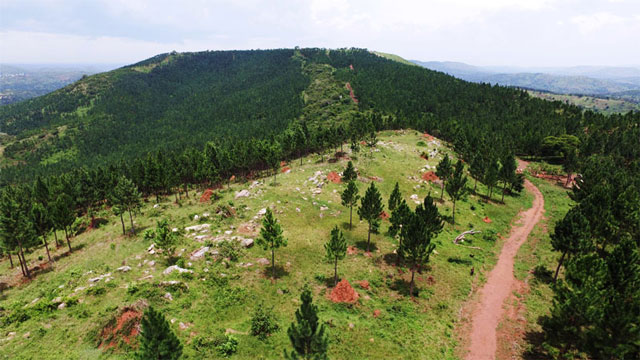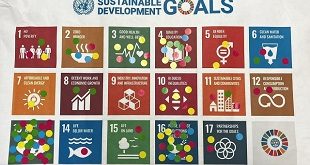
COMMENT | PIUS WAMALA | Every 21st of March, Uganda joins the rest of the world to commemorate the International Day of Forests. Proclaimed by the United Nations General Assembly in 2012, this day is meant to celebrate and create awareness about the importance of all types of trees and forests.
The theme for 2023 is “Forests and health”. This is related to the benefits provided by forests for human health such as clean air and water, climate action, forest foods, life-saving medicines, and generally improving our wellbeing.
COVID-19 is one of the best reminders of how forests directly or indirectly provide important health benefits to people all over the world. Warburgia Ugandensis commonly known as the greenheart tree (locally known as ‘Mukuzannume’), is a medicinal tree whose extracts became an ingredient for making Covidex, an approved herbal medicine for treating viral infections arising from COVID-19 at a time when the world was grappling with medical solutions to manage the Pandemic.
The Forest Investment Program for Uganda (2017) estimates the national GDP contribution of forests to be 5.2%. The report values indirect benefits of forests at UGX 60.8 billion for watershed protection and UGX 56.4 billion for carbon sequestration, among others. Further, the sector supports 94% of household energy for cooking as well as generating tourism revenue, taxes, employment, and household income, and supporting the growth of other sectors such as real estate, construction, energy generation and cottage forest-based enterprises. About 61% of the tourism income is generated by forest-based national parks.
The FAO and UNEP Report (2020) shows that urban and peri-urban forests and trees help to mitigate many of the challenges of living in urban areas – they buffer noise; reduce the urban heat, and provide green space for exercise, recreation, and recovery from stress. The same report presents economic opportunities through forest foods some of which are widely traded – e.g., the global market for edible mushrooms, many of which are collected from forests, has a value estimated at USD 42 billion per year.
Whereas the benefits of trees and forests are enormous, the Annual Programme Performance Report (2022) by the Ministry of Water and Environment indicates a decrease in forest cover from 24.1% in 1990 to 13.3% in 2019.
Yet, according to the UN Department of Economic and Social Affairs, the rising trend in zoonotic diseases is caused by, among others, increased degradation of the natural ecosystems such as forests. Loss of forest habitats increases contact between humans and non-human primates and the transmission of diseases from animals to humans.
The decreasing forest cover is largely attributed to the rising population pressure and urbanization resulting into expansion of agricultural land and settlement areas. General as these reasons may seem, confessions around the limited financial resources to implement and enforce policy actions, lack of more biting penalties for impunitive behaviour and lack of coordination still manifest.
Nonetheless, it is only fair to appreciate the substantial progress made in restoring the forest cover from 9.5% in 2015 to 13.3% by 2019. Concerted efforts of state and non-state actors to restore degraded areas through eviction of encroachers and targeted awareness can be hugely applauded as we celebrate this important day. The Government’s pledges through commitments such as the Bonn Challenge to restore 2.5 million hectares by 2030 and the campaign to plant 40 million trees particularly indigenous species, every year are efforts that cannot be downplayed.
Forest management is capital intensive and a long-term investment
During the International Day of Forests, people all over the world are encouraged to organize activities that foster sustainable forest management such as tree growing campaigns. Equally important is to reflect on long term financing for the forestry sector – how can sustainable forestry investments and projects be packaged more appropriately to benefit from affordable product solutions offered by financial institutions?
The Forest Policy Service of the FAO noted that the private sector is the main source of financing for forestry investments and the amount of financing and diversity of investors has increased rapidly in recent years. Currently, it is estimated that the private-sector accounts for about 80 – 90% of financing for forestry.
Forest management is capital intensive and a long-term investment. This is particularly true in the case of tree planting. Forests are often not accepted as collateral for credit; lending policies favour short-term loans with low risks as opposed to long term maturity periods of trees, while inadequate information and limited understanding of the sector contributes to an inflated perception of risk in forestry; and interest rates are often high with short pay back periods. Such challenges limit access to affordable credit.
Despite the challenges associated with access to credit, the contributions of forests to economic development, social well-being and the environment are increasingly becoming important. This opportunity is being seized by financial institutions who are now targeting innovative financing mechanisms for the sector. These mechanisms may generate new sources of revenue and help to make investments in sustainable forest management more attractive and feasible. It is necessary to examine how to expand and diversify financing mechanisms and sources of finance.
Reducing risks and uncertainty that arise particularly from the high capital investments and long maturity periods of the forestry investments are vital if we are to increase funding and financing. Minimising and mitigating risks includes creating more flexible financing mechanisms and borrowing conditions, assessment of the investment risks, and provision of technical assistance.
This is where the Uganda Development Bank makes a difference through her green finance products – the green loans, equity, guarantees and grants blended with debt. In our view, access to finance especially for SMEs is a crucial component of efforts to restore, climate proof and conserve more productive landscapes.
The Bank is effectively increasing the provision of loans to bankable and innovative businesses in the forestry value chain that are sustainable and provide improved livelihood opportunities to local people. These would ideally include businesses that focus on producing for local, national, and international markets, as well as businesses in the secondary sector, such as agroprocessing. To strengthen forestry industries, activities to be financed could include forestry inputs, machinery or equipment, technology, and digitalization.
Sustainable use and value addition to forest resources can potentially increase incomes and employment for climate smart development. Development of a market and supply chain for different forest products and services has potential to improve smallholder livelihoods through enterprises producing solid wood products and pulp and paper industries highly contributing to import substitution and socio-economic transformation.
*****
 Pius Wamala is a Senior Green Finance Officer at the Uganda Development Bank.
Pius Wamala is a Senior Green Finance Officer at the Uganda Development Bank.
 The Independent Uganda: You get the Truth we Pay the Price
The Independent Uganda: You get the Truth we Pay the Price



